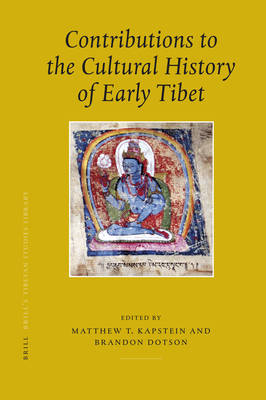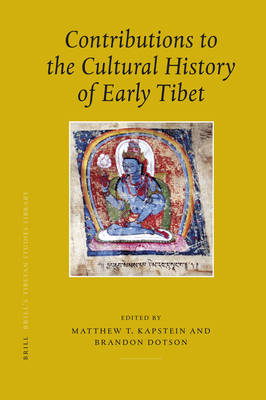
- Afhalen na 1 uur in een winkel met voorraad
- Gratis thuislevering in België vanaf € 30
- Ruim aanbod met 7 miljoen producten
- Afhalen na 1 uur in een winkel met voorraad
- Gratis thuislevering in België vanaf € 30
- Ruim aanbod met 7 miljoen producten
Zoeken
Contributions to the Cultural History of Early Tibet
€ 232,45
+ 464 punten
Omschrijving
The study of the rise and institutions of the Tibetan empire of the seventh to ninth centuries, and of the continuing development of Tibetan civilization during the obscure period that followed, have aroused growing interest among scholars of Inner Asia in recent decades. The six contributions presented here represent refinements in substance and method characterizing current work in this area. A chapter by Brandon Dotson provides a new perspective on law and divination under the empire, while the post-imperial international relations of the Tsong kha kingdom are analyzed by Bianca Horlemann. In "The History of the Cycle of Birth and Death", Yoshiro Imaeda's investigation of a Dunhuang narrative appears in a revised edition, in English for the first time. The problem of oral transmission in relation to the Tibetan Dunhuang texts is then taken up in the contribution of Sam van Schaik. In the final section, Matthew Kapstein and Carmen Meinert consider aspects of Chinese Buddhism in their relation to religious developments in Tibet.
Specificaties
Betrokkenen
- Uitgeverij:
Inhoud
- Aantal bladzijden:
- 332
- Taal:
- Engels
- Reeks:
- Reeksnummer:
- nr. 14
Eigenschappen
- Productcode (EAN):
- 9789004160644
- Verschijningsdatum:
- 20/07/2007
- Uitvoering:
- Hardcover
- Formaat:
- Genaaid
- Afmetingen:
- 169 mm x 247 mm
- Gewicht:
- 739 g

Alleen bij Standaard Boekhandel
+ 464 punten op je klantenkaart van Standaard Boekhandel
Beoordelingen
We publiceren alleen reviews die voldoen aan de voorwaarden voor reviews. Bekijk onze voorwaarden voor reviews.










